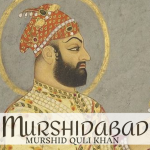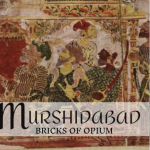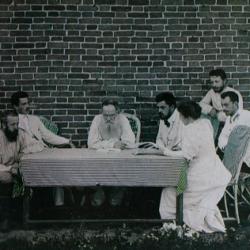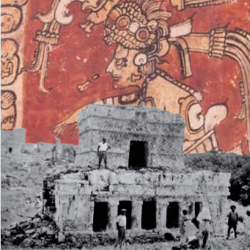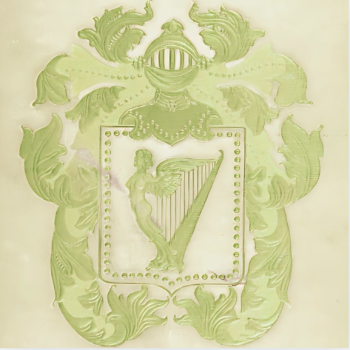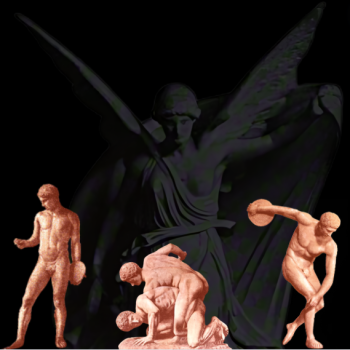THE CIVIL STATION
The “Club” and the clubhouse was an important social institution. “In any town in India the European Club is the spiritual citadel, the real seat of British power, the Nirvana for which native officials and millionaires pine in vain.” As was the case in Britain, overseas clubdom was a stratified ladder, progress of which depended upon one’s background, career prestige, seniority, and financial situation. Playing sports and socializing with fellow Europeans was encouraged for settlers, colonial administrators, and military officers. Ashley Jackson, a historian of the British Empire, states that the club provided important functions, such as helping to prevent loneliness or the temptation of becoming too familiar with the locals, which was frowned upon in racially segregated societies.[1] This segregation does not appear to be as pronounced in Johnston’s experience in Murshidabad, for he writes:
When these covenanted civilians of Indian blood came to serve side by side with Englishmen, they suffered no personal or social disabilities. They gave dinners and were invited to dinners exactly as if they had been Englishmen, and their ladies were received on terms of entire equality. A British assistant collector served under a collector, a native of Bengal, with perfect equanimity. The social life of a civil station, the little administrative capital of a district, was inspired by the same practical tolerance. One has seen a set of tennis at the club in such a station where the four players were a Mohammedan prince, splendid in red and green satin; a youthful raja of Brahman blood, with a countenance like old gold; a young Oxford graduate, the junior covenanted civilian of the district; and a Eurasian girl, daughter of the civil engineer, who had married a lady of Bhutia race from the Himalayas. The civil engineer and his family were among the most popular members of that little social world.[2]
The Civil Engineer whom Johnston references here was Charles E. Livesay of the Public Works Department, who “had married a lady of the Bhutia race from the Himalayas.” Johnston was particularly close with eight-year-old Maud Livesay, the “youngest of the four [Livesay] maidens.” The other Livesay daughters were Lena, Mabel, Ethel, and Meta.[3]
The Johnstons also befriended two Lyonnaise brothers, Alphonse and Eugène Gallois, who were connected with the silk production of the Louis Payen & Co. Filature. (The other main filature was the Bengal Silk Company on Babul Bona Road.)[4] Alphonse was a married to a woman named Jeanne-Cecile, and together they had at least one child, a boy named Frederick.[5] Eugène was an affable old man and an “inveterate gossip.” He played billiards Johnston in the Civil Station Clubhouse and provided Verochka with society stories when accompanying her on walks around town. He lived in a large white barrack between the Johnston’s home and Tuite-Dalton’s residence.[6] Once when the Johnstons called on Eugène, they found him “seated amid cables of coiled gold, like a Modernist genie of the Arabian Nights.”[7]
One of the first social events to occur in Berhampore at the time of the Johnston’s arrival was the Berhampore Races, which began on February 5, 1889.[8] The hot weather of India, “being unfavorable to both man and horse for racing,” meant Anglo-Indian rulers held their races during the cooler months of the sub-continent. The race, and the ball which followed, was the most important social event in Bengal of the year.[9] Most of the former cantonments had a racecourse, but the one in Berhampore, situated on the banks of the Bhagirathi River with a “little clean lawn,” was considered particularly excellent.[10] Chairs were installed in stands which remained otherwise empty the remainder of the year, and enterprising coffee-wallahs erected stalls to sell their coffee at four annas a cup. These races became quite respectable in India, “from the quantity, as well as the quality, of the sport it furnishes.” The Nawab of Murshidabad distributed handsome prizes and hosted a pig-sticking at the conclusion of the Races in the tradition of his late-father.[11] In previous years Alphonse Gallois hosted a gymkhana meeting at the close of the races that was one of the most popular fixtures in Bengal. Alphonse had fond memories of pig-sticking with the late-Nawab, recalling one “hog-hunt” in particular, two decades earlier, when a fine specimen of a boar fell to his spear.[12]
Both Gallois brothers were proud of their work, and graciously explained the process of boiling, steaming, and reeling off tussar silk from the cocoons of silk-worms. [13] The silk trade was one of earliest of all the industries to occupy the servants of the East India Company (EIC) in Murshidabad, and its production, consequently, occupied the interests of its successor, the British Raj. [14] Though the silk-trade had declined since the days when it was a main source of revenue to the EIC, it still formed, in the raw, an appreciable item in Indian commerce.[15] Louis Payen’s silk production was previously a quite profitable enterprise. The company added three large filatures to their production since 1886, and they were in the process of building a fourth in 1888.[16] A month before the Johnstons arrived in India, Alphonse Gallois submitted a report to the Bengal Agricultural Department stating a decline in the silk-industry. One of the reasons for the decline was the excessive rent extracted by zamindars (Bengal landlords) from the ryots (tenant farmers,) who cultivated the mulberry plants.[17] Another influence which handicapped the Indian output of silk was the prevalence of disease (Pébrine, Flacherie and Grasserie) among the silkworms.[18] The British Raj repurposed several barracks in the Berhampore Cantonment to be used as a laboratory of practical sericulture, and an apparatus for silk experiments, purchased by the Bengal Government from Europe, arrived in Berhampore concurrently with the Johnstons. Nitya Gopal Mukerji, a graduate of Cirencester Agriculture College and Louis Pasteur’s laboratory, was chosen to conduct “silk- worm experiments,” with “pure-types” and “cross-breeds.” He was greatly in favor of introducing the European worms and system of culture to India.[19]
← Table Of Contents →
SOURCES
[1] Jackson, Ashley. Buildings Of Empire. Oxford University Press. Oxford, England. (2013): 108.
[2] Johnston, Charles. “A Perspective On India.” The Atlantic Monthly. Vol. CXXXVIII, No. 6. (December 1926): 848-856.
[3] In “How The Army Was Kidnapped,” Johnston refers to the Livesay family as the “Patersons.” Charles Edward Livesay, however, was the Engineer of Murshidabad in 1889, and the Executive Engineer in the “Rivers Division” of Nuddea in 1891. [“Breach Of The Laltakuri Embankment.” The Englishman’s Overland Mail. (Calcutta, India) September 7, 1889.] According to the published list of members of the Institution of Civil Engineers, Livesay can definitively be placed living in Berhampore in 1891, and it is reasonable to assume that he lived there in 1889. [The Institution of Civil Engineers. Charter, Supplemental Charter, By-Laws, And List Of Members Of The Institution of Civil Engineers. The Institution of Civil Engineers. London, England. (1891): 75.] The 1901 England Census would support this theory, as Charles Edward Livesay was listed as a retired Civil Engineer in who had five daughters, all of whom were born in India, and whose names and ages correspond to the descriptions Johnston provides in “How The Army Was Kidnapped.” There was 22 y/o Lena Livesay born in Calcutta in 1867, and 19 y/o Mabel, born in 1871. (Either one of these women could have been the “Molly” mentioned in the article, but Mabel, being closer in age to her younger sisters, is most likely “Molly.”) Then there was 12 y/o Meta corresponding to the 12 y/o “Meg”; the 11 y/o Ethel corresponding to the 11 y/o “Milly”; and 8 y/o Maud corresponding to “Madge.” [Ancestry.com. 1901 England Census [database on-line]. Provo, UT, USA: Ancestry.com Operations Inc, 2005. Original data: Census Returns of England and Wales, 1901. Kew, Surrey, England: The National Archives, 1901. Data imaged from the National Archives, London, England. Surrey TW9 4DU.] In “How The Army Was Kidnapped,” Johnston writes: “[Molly’s] grandmother was a Bhootia woman; the dear old mother’s high cheekbones showed it.” [Johnston, Charles. “How The Army Was Kidnapped.” The Atlantic Monthly. Vol. CXIV, No. 4. (October, 1914): 469-477.] In “A Perspective On India,” Johnston writes: “A Eurasian girl daughter of the civil engineer, who had married a lady of Bhutia race from the Himalayas.” [Johnston, Charles. “A Perspective On India.” The Atlantic Monthly. Vol. CXXXVIII, No. 6. (December 1926): 848-856.]
[4] Johnston, Charles. “Helping To Govern India: Kandi Subdivision.” The Atlantic Monthly. Vol. 109, No. 2. (February 1912): 265-273; O’Malley, Lewis Sydney Steward. Murshidabad. The Bengal Secretariat Book Depot. Calcutta, India. (1914): 131.
[5] Newspaper reports state that a Agnes Mary Monica, “wife of Alphonse Gallois, of Rajshaye and Berhampore” died at the age of 33 in 1873. [“Deaths.” Homeward Mail From India, China And The East. (London, England) August 4, 1873.] In 1880 newspaper reports state that the “wife of A. Gallois” gave birth to a son at Casella Factory, Rajshye on August 17, 1880. [“Domestic Occurrences.” Madras Weekly Mail. (London, England) September 2, 1880.] From J.G. Ritchie’s memoir we know that Alphonse and his wife had children. [Ritchie, John Gerald. The Ritchies In India: Extracts From The Correspondence Of William Ritchie, 1817-1862. J. Murray. London, England. (1920): 367.] Assuming that the mother of the child born in 1880 is the woman whom Ritchie is referring, that leaves us with Jeanne Cecile (listed as Jonna Sysilla Gallois on Ancestry.com,) who gave birth to Frederick Eugene Mary Gallois on August 17, 1880, in Cassella, Bengal, India. [Ancestry.com. India, Select Births and Baptisms, 1786-1947 [database on-line]. Provo, UT, USA: Ancestry.com Operations, Inc., 2014.]
[6] In three of his articles, “A Prince Of India,” “His Highness The Nawab,” and “The Reincarnation Of Maung Hkin,” Johnston writes of “Gilbert Sahib.” Comparing the content of Johnston’s articles with information from Ritchie’s memoir, and Vera’s letters, Eugène Gallois becomes the most likely candidate for the true identity of “Gilber Sahib.” Ritchies writes: “Near us were the Gallois’, a bourgeois family from Lyons engaged in silk manufacture. Eugene and Alphonse were amusing old Frenchmen, while Madame was voluble and very French. They had pretty children, who played with Theo.” [Ritchie, John Gerald. The Ritchies In India: Extracts From The Correspondence Of William Ritchie, 1817-1862. J. Murray. London, England. (1920): 365.] Johnston writes: “[Gilber Sahib] and I had the station all to ourselves. He represented commerce—that is, a Lyons silk house.” [Johnston, Charles. “A Prince Of India.” The Puritan. Vol. V., No. 2. (March 1899): 309-319.] “Gilber Sahib raised his white helmet with a gallant little bow, as though the compliment were personal to him. Then he made amends, explaining that the women were carrying the baskets of silk cocoons to the filature. We called on Gilber Sahib once, in his big white barrack, and found him seated amid cables of coiled gold, like a Modernist genie of the Arabian Nights.” [Johnston, Charles. “His Highness The Nawab: Helping To Govern India.” The Atlantic Monthly. Vol. CVIII, No. 4. (December 1911): 797-804.] “‘Colonel Waldron married a native girl, you know!’ gossiped dear old Gilber Sahib.” [Johnston, Charles. “The Reincarnation Of Maung Hkin.” The Atlantic Monthly. Vol. CXVI, No. 5. (November 1915): 616-624.] In a letter dated May 11, 1889, Vera writes to her family: “Old Eugène Gallois, for instance, recently told me while I was walking with him alone, that he was not a Christian, but rather worshipped God in the manner of Flammarion, whom he is a great reader, and confessed all of his doubts and hopes to me.” [Johnston, V. V. “Letters of Vera Johnston,” May 11, 1889 [g.] , Berhampur , India, entry.]
[7] Johnston, Charles. “His Highness The Nawab: Helping To Govern India.” The Atlantic Monthly. Vol. CVIII, No. 4. (December 1911): 797-804.
[8] “Berhampur Races.” The Englishman’s Overland Mail. (Calcutta, India.) February 12, 1889.
[9] (“An Old Indian.”) “Social Life In Bengal Fifty Years Ago.” The Calcutta Review. Vol. LXXIV, No. 147 (1882): 183-192; Jockey Club, S.C. History of the Turf in South Carolina. Russell & Jones. Charleston, South Carolina. (1857): 23-24.
[10] “Sport In Calcutta.” Civil & Military Gazette. (Lahore, Pakistan) February 11, 1888.
[11] “Sport In Calcutta.” Civil & Military Gazette. (Lahore, Pakistan) February 11, 1888; Raoul. Reminiscences Of Twenty Years’ Pigsticking In Bengal. Thacker, Spink and Company. Calcutta, India. (1893): 113; Johnston, Charles. “Helping To Govern India: Kandi Subdivision.” The Atlantic Monthly. Vol. 109, No. 2. (February 1912): 265-273.
[12] “Account Of A Hog-Hunting Party, Given By H.H. The Nawab Nazim Of Bengal.” Civil & Military Gazette. (Lahore, Pakistan) March 10, 1868; “Sporting Notes.” The Indian Daily News. (Calcutta, India) February 14, 1894.
[13] “Prize Distribution At The College.” The Englishman’s Overland Mail. (Calcutta, India) July 28, 1891.
[14] Walsh, J. H. Tull. A History Of Murshidabad District (Bengal): With Biographies Of Some Of Its Noted Families. Jarrold & Sons. London, England. (1902): 102.
[15] “Silk-Growing In India.” Frank Leslie’s Popular Monthly. Vol. XLIII, No. 4. (April 1897): 455- 457.
[16] Wardle, Thomas. The History And Growing Utilisations Of Tussur Silk. W. Trounce. London, England. (1891): 32.
[17] Before the American Civil War, rent was between Rs.1-Rs.2. During those years, and the prosperous few years which followed, the ryots paid any price the zamindars set. Rent prices rose to Rs.12-Rs.14. The winds of fortune changed in Berhampore, and the region suffered from steady economic depression. The zamindars preferred their lands to fallow rather than lower their rent. [“The Silk Conference At Calcutta.” Civil & Military Gazette. (Lahore, Pakistan) January 12, 1886; Wardle, Thomas. Silk: Its Entomology, History, & Manufacture: As Exemplified At The Royal Jubilee Exhibition, Manchester, 1887. John Heywood, London, England. (1887): 42; Anon. “Experiments In Silk-Worm Rearing At Berhampur.” The Indian Forrester. Vol. XV, No. 4 (April 1889): 124-134; Mukerji, Nitya Gopal. A Monograph On The Silk Fabrics Of Bengal. The Bengal Secretariat Press. Calcutta, India. (1903): 14.]
[18] “Silk-Growing In India.” Frank Leslie’s Popular Monthly. Vol. XLIII, No. 4. (April 1897): 455- 457.
[19] “News Of The Week.” The Englishman’s Overland Mail. (Calcutta, India) January 29, 1889; J.C. “Mr. Mookerji’s Method Of Silk Culture.’” The Englishman’s Overland Mail. (Calcutta, India) May 7, 1889; Mukerji, Nitya Gopal. “Pure Types Versus Cross-Breeds.’” The Englishman’s Overland Mail. (Calcutta, India) May 14, 1889; “Silk-Growing In India.” Frank Leslie’s Popular Monthly. Vol. XLIII, No. 4. (April 1897): 455- 457; Mukerji, Nitya Gopal. A Monograph On The Silk Fabrics Of Bengal. The Bengal Secretariat Press. Calcutta, India. (1903.)


